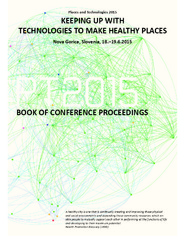Prikaz osnovnih podataka o dokumentu
Media architecture and sustainable environment
| dc.contributor | Fikfak, Alenka | |
| dc.contributor | Vaništa Lazarević, Eva | |
| dc.contributor | Fikfak, Nataša | |
| dc.contributor | Vukmirović, Milena | |
| dc.contributor | Gabrijelčič, Peter | |
| dc.creator | Čikić-Tovarović, Jasna | |
| dc.creator | Ivanović-Šekularac, Jelena | |
| dc.creator | Šekularac, Nenad | |
| dc.date.accessioned | 2020-05-06T19:39:31Z | |
| dc.date.available | 2020-05-06T19:39:31Z | |
| dc.date.issued | 2015 | |
| dc.identifier.isbn | 978-961-6823-68-5 | |
| dc.identifier.uri | https://raf.arh.bg.ac.rs/handle/123456789/660 | |
| dc.description.abstract | Being the integral part of a building, street or infrastructure, media contents shape the appearance of modern cities and affect the way their inhabitants act. The objective of this paper is to analyze the forms of communication that make the media contents useful. The communication between mediafacades and their environment is achieved by applying various sources of artificial light and mechanical systems. There are numerous advantages regarding media facades and their impact on certain buildings, city areas and regions. However, these façades are regarded to be the result of great technological achievements in the field of architecture and other spheres; therefore, certain problems are inevitably come across. This paper deals with the challenges in the media architecture and its interaction with cities and people as well as the users of media objects. Sustainability, visual and light comfort, visual and light pollution in cities, exaggerated importance ascribed to the perception of information technologies and architectural marketing focused on ’healthy life in cities’ are some of the topics included in this paper. One of the significant aspects that is to be considered carefully is appropriate ’positioning’ of media contents within a city, since there is a potential problem of excessive application of media contents in urban environment. This paper explores the ways in which everyday functioning in a city (noise, street lights, etc.) can affect the audio-visual qualities of media facades. Also, this work presents the methods of integrating the principles of sustainable architecture in the field of media architecture. Whenever it is possible, the principle of energy efficiency should be included in media-architecture design of new structures and remodeling of some old structures. Environmentally-aware development and reductions in energy consumption are the most important goals to be achieved in the field of media façade designs, regarding the phases of construction and media structures. | en |
| dc.language.iso | en | sr |
| dc.publisher | Ljubljana : Faculty of Architecture | sr |
| dc.rights | openAccess | sr |
| dc.source | Keeping up with technologies to make healthy places : book of conference proceedings / [2nd International Academic Conference] Places and Technologies 2015, Nova Gorica, Slovenia | sr |
| dc.subject | Media architecture | sr |
| dc.subject | Media facades | sr |
| dc.subject | Light pollution | sr |
| dc.subject | Healthy places | sr |
| dc.title | Media architecture and sustainable environment | en |
| dc.type | conferenceObject | sr |
| dc.rights.license | ARR | sr |
| dcterms.abstract | Ивановић-Шекуларац, Јелена; Чикић-Товаровић, Јасна; Шекуларац, Ненад; | |
| dc.citation.spage | 171 | |
| dc.citation.epage | 178 | |
| dc.identifier.fulltext | https://raf.arh.bg.ac.rs/bitstream/id/1785/Book_of_Proceedings_PT2015CikicSekularacJN.pdf | |
| dc.identifier.rcub | https://hdl.handle.net/21.15107/rcub_raf_660 | |
| dc.type.version | publishedVersion | sr |

